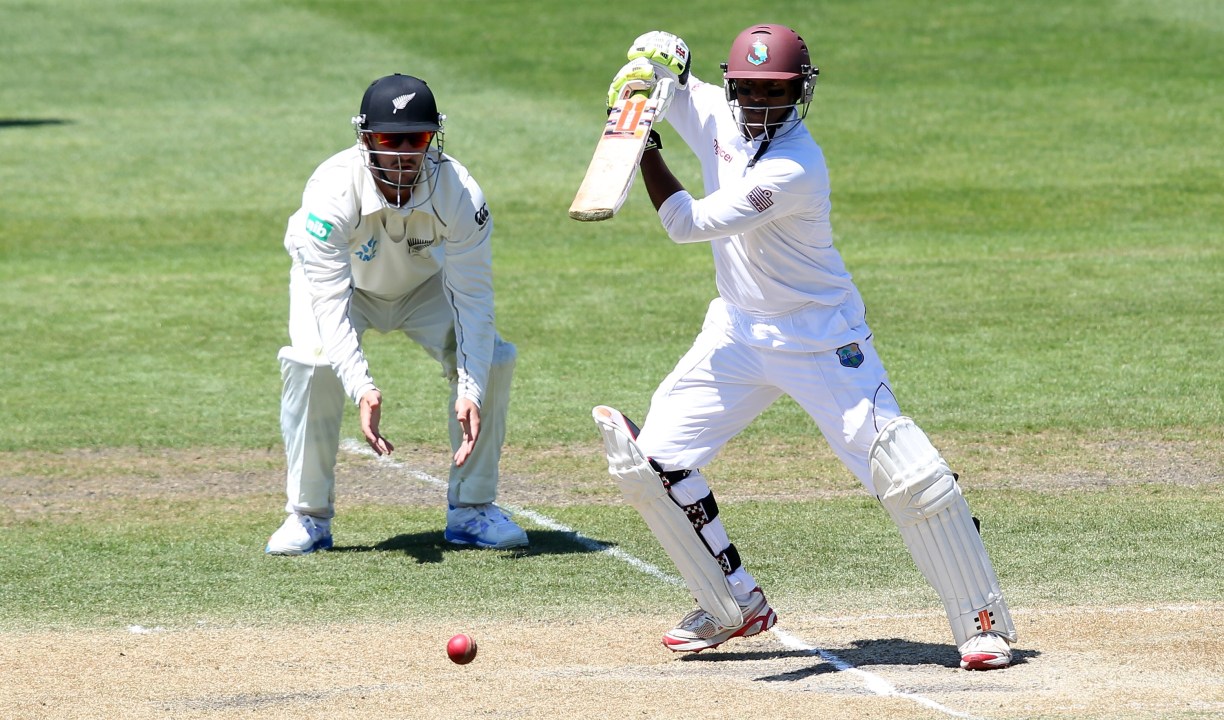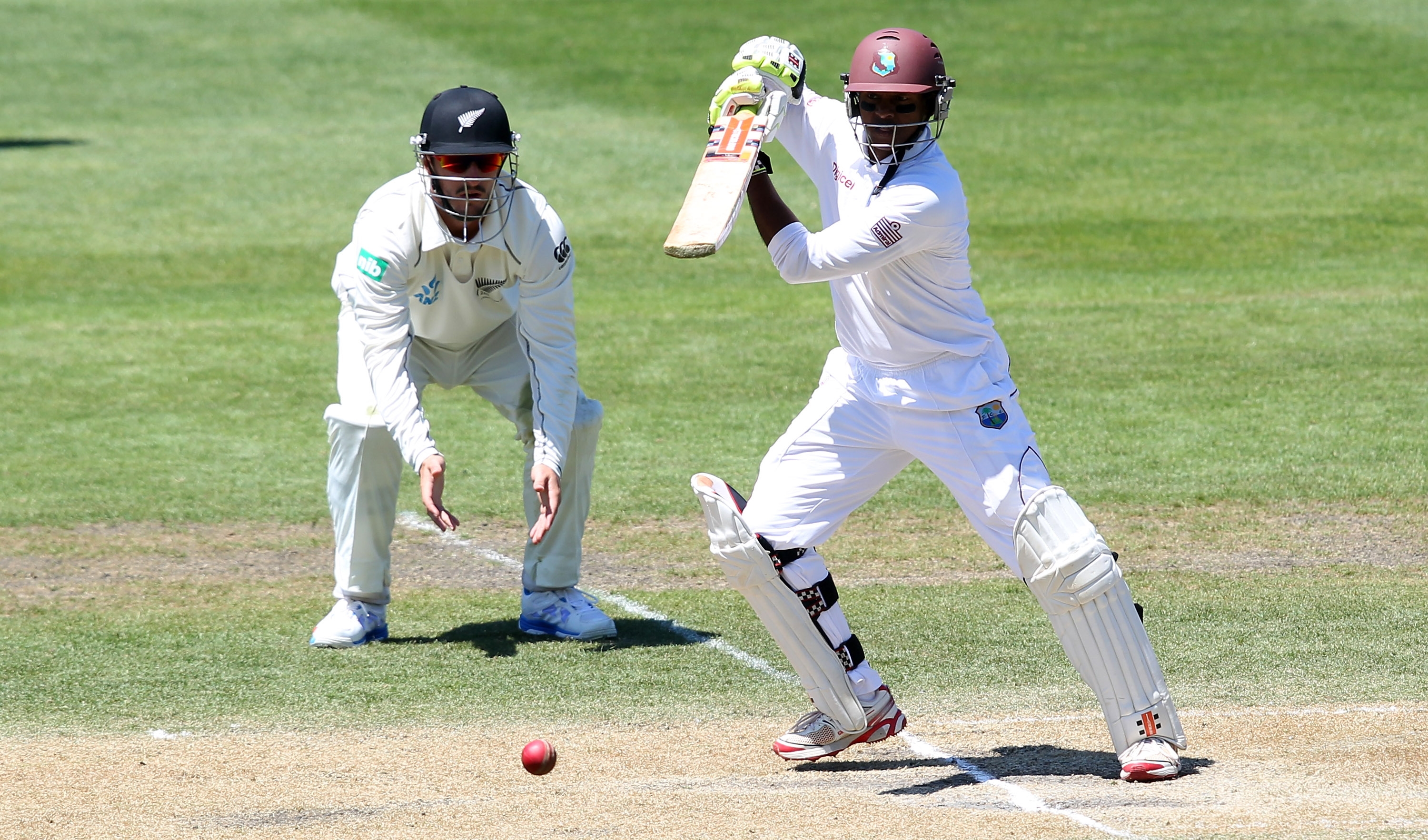And then there were none. The retirement of Shivnarine Chanderpaul, the great Guyanese batsman, is the end of an era. He is the last of the old guard; the last of the great heroes from a time before the razzle-dazzle of the new 20/20 cricketing era. The last connection, too, to the time when the West Indies inspired terror, not pity.
He was the last of my own Hornbys and Barlows; the last of the 1974 cohort to slip into the night. The torch will now be carried by other, younger, men. Many of them will prove to be wonderful but it will not be quite the same. My contemporaries no longer play test cricket.
It is hard to think of a cricketer who, in recent times, has had to endure so much for so long with so little reward. No-one would select Chanderpaul in a Greatest XI of our time, but if you needed a man to bat as though your life depended upon it there’d be few – Allan Border, Steve Waugh – you’d select ahead of him.
Chanderpaul was fascinating and not just on account of his crooked, crab-like, stance at the wicket. It shouldn’t be possible to bat like that but he made it work. It took months of practice in the nets to look like that and lesser – less determined – players might have given up the attempt, not least since insisting upon it risked making Shiv look ridiculous.
But it worked for him and that was enough. It seemed fitting, too, that the last great West Indian batsman – and who knows if there will be another to replace him – should be so unorthodox, such an antithesis, even, of what we imagine when we think of great batsmen from the Caribbean.
There can be artistry in not playing, too, however, and Chanderpaul’s judgement justified his approach. Good things come to those who wait, he seemed to suggest. Or at least to those who endure. He knew that. It took him 30 innings to score his first test century; then there were 29 more in his next 250 innings. Most of them scored from 5 or 6, shepherding a frequently feckless tail.
The attempt mattered, you understand. There was nothing frivolous about Chanderpaul’s batting. He understood the value of time served, the importance of patience, the necessity of endurance. For years, he held up an end and, by doing so, quietly rebuked his team-mates. Test cricket is a serious business and Shiv Chanderpaul played it seriously. He was an Eeyore in a team of Tiggers.
But, outwardly at least, there never seemed to be any complaining. This was just the way it was and if his team-mates up the order had landed the West Indies in another fine mess it was Chanderpaul’s job to rescue them. Here we go again. This must, you think, have been wearisome and even, often, infuriating. Lesser men might have jacked it in.
There’s a risk here of making Chanderpaul seem too saintly. A danger of allowing it to be seen that he bore the sins of his team-mates with greater stoicism than they deserved. And yet wasn’t that in fact the case? The West Indies now risk something worse than even pity: scorn. No-one who saw anything of their recent capitulation in Australia can welcome the prospect of seeing this rabble again any time soon.
Sometimes it seemed, as a friend put it, that Life is what happens to you while watching Chanderpaul bat. He went on and on and on. Entire years seemed to pass in which he was almost impossible to dismiss. 2008 saw Chanderpaul in excelsis. 16 innings, seven not outs, 909 runs at an average of 101. In a three test series against the Australians that year, he batted for 26 hours.
Of course there were holes in his record. He faired poorly in Pakistan and Australia, for instance. There were, also, occasional accusations of selfishness. People looked at the 49 not outs and assumed he must have put himself before the team. But as his career went on, there was less and less of a team to put first. Besides, if Chanderpaul did not stand who would? He was the man – no longer a boy – on the burning deck.
There were other moments, however. Most notably there was an extraordinary 69 ball hundred – still the sixth fastest in terms of balls faced – at the Bourda. An innings to make you wonder what might have happened if he’d always batted like that. But if he had he would not have been Chanderpaul.
The eccentricities – the wide-eyed, open-chested stance, the hammering of the bail into the ground as he took his mark, the shuffle across the crease for another leave – mattered too, not least because they were immediately recognisable and made him forever memorable. But there was more than just that. Nearly 12,000 test runs and 30 centuries. 25,000 first-class runs and 71 hundreds. A test average of 51 and a first-class record of 54.
Perhaps there will be another great West Indian batsman but, right now and as matters stand, Chanderpaul is the last of a long and ancient line. That’s a matter of wincing regret for all of us. The possibility that West Indian cricket will never recover cannot be discounted. Sometimes things just die. But Chanderpaul, almost alone in his later years, kept hope alive. That’s worth a cheer just as much as it merits a moment of sad reflection.
The Last Man, right enough.








Comments